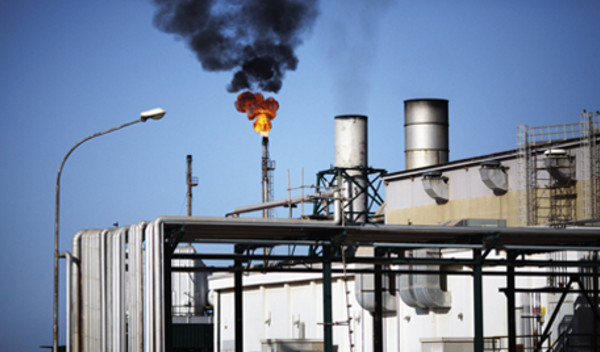

The start of 2016 has seen its fair share of despondent investment predictions, but for the high-yield bond market, the potential canary in the coal mine arrived a few weeks earlier.
US firm Third Avenue’s December decision to suspend its Focused Credit fund sent judders through an asset class that had already endured a tough year due to concerns over the stability of issuers from the energy sector.
The fund suspension meant the return of long-standing concerns about liquidity, but it is the oil price which is of most immediate concern to market participants.
The commodity has continued to fall in the opening days of 2016; the price of a barrel of Brent crude oil briefly dropping below $30 last week for the first time in 12 years.
This could lead to further problems for US high yield in particular, given the number of energy-focused issuers populating the space.
Some are even more concerned. The F&C multi-manager team’s Anthony Willis warned energy troubles could seep into other parts of the asset class.
“We go into 2016 with the US high-yield market already in some distress, driven by likely defaults across some companies in the energy sector,” Mr Willis said.
“It is not clear if the fallout from the sector will spill over across the asset class. But given the limited potential upside, we are choosing to hold only the most flexible of fixed income managers who can take advantage of investment opportunities created by any volatility, notably in Europe where fundamentals are healthier.”
Other managers, such as JPM Global Bond Opportunities co-manager Nick Gartside, are also looking to Europe.
Mr Gartside said he was “awaiting supply” as “market volatility fends off issuance for the moment”, but thought European high-yield debt could be good value.
“Credit spreads are essentially pricing in a multiple of where default rates should be, creating an attractive level of cushion,” he said.
“European high yield continues to benefit from improving fundamentals, meaning that an already higher credit quality market is poised to deliver more rising stars – future investment-grade companies that should deliver tighter spreads and higher prices.”
But Ariel Bezalel, manager of the £2.6bn Jupiter Strategic Bond fund, suspects US problems could spill over to the other side of the Atlantic.
“The concern we have had for a while is some sort of contagion to European credit, as credit in emerging markets and the US has continued to come under pressure,” he said.
The plummeting price of oil appears closely linked to China’s slowdown, which in turn has placed pressure on stockmarkets.
In one sign of the current bearish mood among investors, the RBS credit team warned last week of a “cataclysmic year” ahead, predicting stockmarkets and the oil price could both tumble further and telling investors: “Sell everything except high-quality bonds.”
Most investors’ approach is more nuanced than that, though the need for more discernment is clear.
In this context, there remains a healthy coterie of fund buyers and bond managers who are optimistic on high yield.
Psigma Investment Management’s Tom Becket noted: “There is going to be blood and companies defaulting, but in a world where equity markets produce dull but okay returns, taking a position in credit markets will give you a good return going forwards.”
Mr Becket favours the Airlie Strategic Focus fund, which invests in US small-cap, high-yield credit, expecting it to deliver a 9 per cent annual return, even after defaults are taken into account.
Others noted that while the high-yield sector looked vulnerable in some areas, an improvement in the broader market outlook could also provide an uplift this year.
David Jane, co-manager of Miton’s multi-asset fund range, said overall leverage among high-yield issuers was at “elevated levels” in the US, with distress “increasing as profits have been declining”.
However, he claimed a rosier picture could emerge for investors. “The positive scenario is that inflation expectations continue to remain low, and the deterioration in industrial and energy profitability turns out to be an isolated event,” he explained.
“In this scenario, profits recover and medium-term interest rates can fall further, leading to positive gains across the bond spectrum.”



